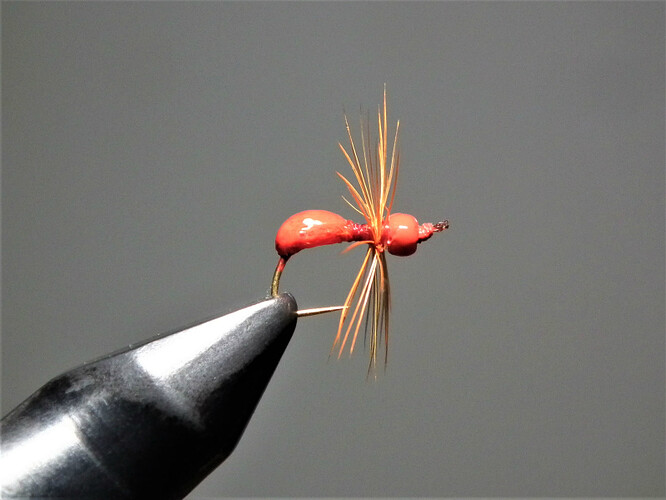I fish for any and all trout that are available to be caught in our local areas, which would include rainbow, brook, brown, and golden trout. Where I fish, cutthroat trout have never been a significant enough species (numbers wise) to fish for, even though the State has tried to establish them here with out success many times in the distant past. Nevertheless I have caught a few cuts in one protected stream in our area, that is a Catch and Release Only mandated water. In northern California cuts are more common, including Lahontan Cutthroat Trout on East Slope streams and lakes, and Searun Cutthroat Trout on the coastal streams and rivers.
As much as possible I prefer to fish for wild fish. Although just what constitutes a “Wild Fish” is a little complicated to define. Is a trout that is dropped out of an airplane into a lake as a sub-fingerling and grows up wild on its own a Wild Trout? If your answer is yes, and I believe it should be, then that would greately expand my wild fish fishing opportunities.
Before 1860 there were no trout in the High Sierra besides the golden trout of the Kern River drainage. Rainbows (which would include sea going Steelhead Trout) were native to the rivers and streams of the Central Valley and the West Slope of the Sierra Nevada Range, up to about the 6,000 foot elevation. Above there, waterfall and cascade barriers to further upstream migration prevented any farther fish population growth. So all the fish we have above 6,000 feet (besides the golden trout in one small area) have been planted at one time or another. Various strains of rainbow, brown, and brook trout have been introduced and do support some natural reproduction in some lakes and streams, but not enough to establish a state wide fishery. And the fisheries we do have are heavily augmented by the California Fish and Wildlife’s vast hatchery system, which also supports the stocked Put-And-Take Fisheries that the majority of our anglers enjoy fishing for. So while we do have wild fish in one form or another, very few of those wild trout are the native trout of California.
For me good Presentations are the top priority. The “right pattern” presented poorly has almost no chance of succeeding. Whereas the wrong fly presented well will more often than not succeed. I haven’t noticed different trout species having particular pattern preferences beyond a few vague applications, such as: Browns are partial to patterns with White elements, Brook Trout like black patterns, Golden Trout are partial to red and orange, while Rainbows have a hankering for Silvery patterns. Around here rainbows like the fastest waters, browns the slower currents with log jams and over hung trees, and brook trout prefer the slowest water of all.
I believe it is wise to try to appeal to all of the fish’s senses to maximize our chances for success in catching them, but utilizing smelly baits is not something I care about doing. You, on the other hand, may have different ideas about scents. But first, check your state’s fish and game regulations to make sure it is legal to use them. While Rabideau emphasizes color to a high degree in the title and substance of his book, you will find that there is also a very strong emphasis on the total package and all that that entails, much more so than the book’s title implies.
Adam, thank you very much for putting up the video! Its about the most through and best illustrated production I have ever seen on these all important angler to fish/ fish to fly elements of our fishing environments.




